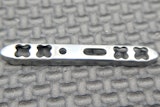The Internet of Thing (IoT) industry is booming, and everywhere you look, new innovations are taking place across a variety of industries, most notably healthcare, agriculture, transportation, and automotive. Many of the same principles apply to both the IoT and automotive markets in general, with smart devices taking over where humans were once required, therefore, it’s tempting to put autonomous vehicles into that IoT bucket. However, the automotive industry’s multiyear development cycle and complex validation and reliability testing requirements make it uniquely different to IoT.
That doesn’t mean however, that the automotive industry can’t benefit from the speed and flexibility of IoT. Auto manufacturers need the speed and agility found in the IoT space while maintaining an ever-increasing methodical reliability and safety processes required to produce zero-defect autonomous vehicles. Fully autonomous Level 5 vehicles, as defined by the National Highway Traffic Safety Administration (NHTSA), could take several years or perhaps even decades before achieving full market acceptance. According to research from Loup Ventures, 99.9 percent of today’s passenger and light commercial vehicles have little or no automation capabilities. It will take more than 20 years—until the year 2040—before the industry sees more than 90 percent of all vehicles sold as “highly” and “fully” autonomous systems.
How Can an IoT Mindset Help?
In recent years, the development cycle for new vehicles has shortened significantly. Improved timing from concept development to production of new vehicles is now three to five years versus the five to seven it has taken in the past. But in the age of IoT’s fast to market-leading edge technologies, the automotive industry is challenged to keep pace in order to ensure that communications technology equipped within the vehicle keeps pace and with what is available to consumers outside the vehicle. With 5G wireless connectivity on its way and the requirements for autonomous vehicles becoming clearer, automotive manufacturers are exploring ways to develop flexible system architectures which allow for quick adaptation to the latest IoT trends.
While today’s vehicles need connectivity for navigation systems, eCall, software updates and other connected car and advanced driver-assistance system (ADAS) functionality, the vehicles of the future will require consistent access to high-speed, reliable, low-latency connectivity to power safety-critical and data-driven applications such as vehicle-to-vehicle (V2V) and vehicle-to-infrastructure (V2I) communications systems and data analytics capabilities.
Automotive antenna systems required to serve all of the increasing feature function communication needs are growing in numbers, and the challenge to design and implement them into the vehicle is increasing. In the age of IoT, automakers need a new way of looking at flexible communications systems in the vehicle that can help get cars into production much more quickly in order to keep up with advancements in communications technology. Car manufacturers are working together more with suppliers that have deep IoT expertise as well as a foolproof understanding of the stringent requirements of the automotive space.
Many companies have been able to compress the IoT development timeline by implementing an agile development model based on the concept of “build, test, learn.” By reducing time spent in the pre-production “build” phase, they are able to do more to the early design and develop “learn” phase and iterate more often. In the automotive industry, that mentality is translating into efforts such as reference designs specifically built for connected cars that group antennas into a smaller package space, in a way that maximizes their efficiency and performance while minimizing interference between the antennas themselves, the vehicle body, and in the environment where reflections and multi-path conditions occur. Those types of initiatives—where communications technology experts are brought in to guide the process—is helping auto manufacturers bring solutions to market more quickly—and helping them become more IoT-like.
What Does it Mean to Have a Pharmaceutical Mindset?
Market acceptance of autonomous vehicles will grow as consumers becomes accustomed to giving up “control” of their vehicles. While speeding up the development cycle through agile processes is a good thing, those processes also need to take into account vehicle safety and legal requirements. Communications technology will have a big role here as well in terms of providing higher data throughput and efficiencies with reliable unobstructed high precision location and communication services
To ensure 100 percent passenger safety in autonomous vehicles, the automotive industry is reaching “pharmaceutical “levels of quality, utilizing similar good practice (GxP) guideline established by the Food and Drug Administration (FDA). GxP guidelines are used by highly regulated industries to ensure they meet strict quality standards. They are considered the gold standard for companies around the world. The five Ps of GxP—people, procedures, products, premises, and processes—provide a clear development roadmap that identifies roles, training, documentation, specifications, and definitions for every stage of the development cycle. This “clinical” approach ensures the proper industry guidelines and controls have been put in place to ensure the autonomous vehicle complies with the most rigorous of standards.
Autonomous vehicles will not happen overnight, nor will they be upon us en masse in the next several years. We’re much more likely to see early adoptions in the service provider space, such as the Ubers and Lyfts of the world, as well as in the logistics delivery service, agriculture, and commercial transportation space. However, by learning to adapt quickly as in the IoT space, and reaching “pharmaceutical” levels of quality, safe, secure, and feature-rich autonomous vehicles are gaining speed towards the new normal.
Dan Michael is Director of Automotive at Taoglas.























